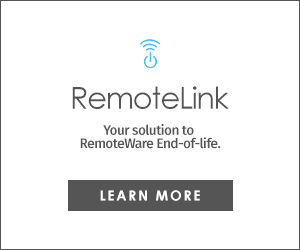What is Data Migration?
Data migration is the process of moving data from one location to another, one format to another, or one application to another. Generally, this is the done when introducing a new system or location for the data. The business driver is usually an application migration or consolidation in which legacy systems are replaced or augmented by new applications that will share the same dataset.
Why would data migration be seen as difficult?
The short answer is "data gravity." Data gravity is a term coined by Dave McCrory, a VP of engineering at GE Digital, back in a 2010 blog post.
The term is an analogy referring to the relationship between data and applications: they are attracted to one another, like the Law of Gravity. The challenge is becoming more significant because of data migrations to cloud infrastructures.
To move applications and data to more advantageous environments, Gartner recommends "disentangling" data and applications as a means of overcoming data gravity.
The main issue is that each application complicates data management by introducing elements of application logic into the data management tier, and each one is indifferent to the next data use case.
A temporary work-around: Business processes' use data in isolation and then output their own formats, leaving integration for the next process. Therefore, application design, data architecture, and business processes must all respond to each other, but often one of these groups is unable or unwilling to change.
This forces application administrators to sidestep ideal and simple workflows, resulting in sub-optimal designs. And, although the workaround may have been necessary at the time, the technical debt it brings on would eventually become apparent during data migration or integration projects.
Given this complexity, consider promoting data migration to "priority" status so that it gets the right level of awareness and resources.
Types of data migration
There are numerous business advantages to upgrading systems or extending a data center. For many companies, this is a very natural evolution. Companies migrating to cloud in particular, are hoping that they can focus their staff on other business priorities, fuel top-line growth, increase agility, reduce capital expenses, and pay for only what they need on demand.
Let’s define the types of migration:
- Storage migration. The process of moving data off existing arrays into more modern ones that enable other systems to access it. Offers significantly faster performance and more cost-effective scaling while enabling expected data management features such as cloning, snapshots, and backup and disaster recovery.
- Cloud migration. The process of moving data, application, or other business elements from either an on-premises data center to a cloud or from one cloud to another. In many cases, it also entails a storage migration.
- Application migration. The process of moving an application program from one environment to another. May include moving the entire application from an on-premises IT center to a cloud, moving between clouds, or simply moving the application's underlying data to a new form of the application hosted by a software provider.
How to plan a data migration
Data migration involves 3 basic steps:
- Extract data
- Transform data
- Load data
Moving important and/or sensitive data and decommissioning legacy systems is no easy feat. Having a solid plan is a must; however, you don’t have to reinvent the wheel. You can find numerous sample data migration plans and checklists on the web. For example, Data Migration Pro, a community of data migration specialists, provides a comprehensive checklist that outlines a 7-phase process:
- Premigration planning. Evaluate the data being moved for stability.
- Project initiation. Identify and brief key stakeholders.
- Landscape analysis. Establish a robust data quality rules management process and brief the business on the goals of the project, including shutting down legacy systems.
- Solution design. Determine what data to move, and the quality of that data before and after the move.
- Build & test. Code the migration logic and test the migration with a mirror of the production environment.
- Execute & validate. Demonstrate that the migration has complied with requirements and that the data moved is viable for business use.
- Decommission & monitor. Shut down and dispose of old systems.
This may appear to be an overwhelming amount of work, but not all these steps are needed for every migration. Each situation is unique, and each company approaches the task differently.
In environments such as retail, food and hospitality where there is a vast amount of data being collected constantly from customers; either paying with credit cards and/or other forms of digital payment, to basic customer registries. It is crucial to ensure that data is kept secure; Remoterelief utilizes RemoteLink in order to securely deliver data from endpoints to a final point.
RemoteLink is a remarkable SaaS system built using modern tools and techniques with a focus on minimizing server resources, limiting points of failure, and optimizing performance, all while supporting hundreds of simultaneous connections per server. It's easily installed and configured, and can be implemented and deployed to help transition from legacy systems and solve new operational data movement challenges quickly and efficiently.
Sometimes an IT department doesn't have enough digital workspace expertise on its staff to create and maintain these changes, deployments and integrations. Remoterelief's RemoteLink subject matter experts, specialize in assisting clients in setup, deployment, and remote management of your enterprises' vital and important data.
If you would like more information about Remoterelief and our services, please subscribe to our tech blogs. If you are interested in a demonstration or learning more about RemoteLink features, benefits, and complete device management capabilities click here to speak with a Subject Matter Specialist.



